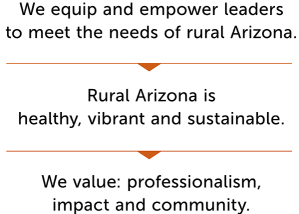Boothill Graveyard overlooks the City of Tombstone from atop its namesake hill, roughly 25 miles down State Road 80 from the I-10 at Benson, and houses one of the Old West’s more notorious headstones. According to legend, Lester Moore worked at Wells Fargo & Co. in Naco, Arizona, which provided express delivery services to the frontier at that time; a patron’s rage over a damaged package in 1880 led to four shots from the man’s iron into Moore’s chest. The incident was, by all accounts, fictitious; while no official records exist of a Les Moore in the area at that time, the affair was nonetheless memorialized in both the movie Tombstone, as well as Johnny Cash’s The Ballad of Boot Hill—the headstone and the Cash lyric read:
“Here lies Les Moore; four slugs from a 44; no Les, no more”
While it was the first pit stop of my trip (but not the last: mining pun intended), this is not a story of the “Old West” as embodied by Tombstone—rather, participants in this CRC were immersed in the tales of Bisbee, Arizona, further to the south: a small but prolific mining town in the state’s southeastern reaches, whose nationwide influence in meeting demands for extractive resources well exceeded its peak population of roughly 25,000. In August of 1880, the same year as Moore’s storied passing, the Copper Queen Mine near the “Mule Gulch Camp” was capitalized for $2.5 million, as the nationwide push for electrification drove demands for copper and other minerals to the forefront. The camp was renamed Bisbee after DeWitt Bisbee, a San Francisco attorney and one of the mine’s investors.
Though the silver mines of Tombstone afforded that town with more rapid initial growth than Bisbee, before long, copper was king in Arizona (becoming for a time the capstone of the “Five C’s of Arizona’s economy” alongside cattle, cotton, citrus and climate), and Bisbee quickly became one of the West’s most productive (and profitable) mining towns. Bisbee grew swift leading into the 20th century with the success of its copper mines and the arrival of the railroad, growing from around 4,000 residents in 1899 to a peak of roughly 25,000 by 1918.
The CRC itinerary was a tour de force in depicting what it means to build community in a town largely driven by industry. After dinner on Friday evening, the group retreated to the courtyard of the Jonquil Motel, accompanied by Boyd Nicholl, former curator of the Bisbee Mining and Historical Museum. What followed was a set of campfire stories in which Nicholl described that miners would work in pairs to accomplish their tasks, and how that intimate degree of built trust translated into relationships among the community at-large. Copper mining was a grueling, two-person job, and Nicholl highlighted how this industry working standard influenced racial and cultural acceptance in the town at a time when much of the country wrestled with immigration, social issues, and in this particular case, what it meant to be both an American and a “Bisbeer.” That dynamic was further reinforced by the feeling of residents’ mutual responsibility to build up their community. The town often sought private financing and assumed debt to make local improvements—a sewer system was built in 1908, electrical and telephone service shortly followed, and a streetcar line was built between Bisbee and the satellite town of Warren that same year. Bisbee was built on the back of these efforts and has long cherished its ability to drive community belonging and investment.
After breakfast on Saturday, the group met at Warren Ballpark: the nation’s oldest continuously operating multi-sport venue, built in 1909—five years before Chicago hosted its first contests at Wrigley Field. The ballyard was a popular stop for the travelling teams of the era, even hosting a postseason game in 1913 between the New York Giants and Chicago White Sox, which saw six future Hall of Famers grace southern Arizona soil. The stadium is still used by the Bisbee High School baseball and football programs and is a center of pride for the town to this day, evoking the monologue of Terence Mann, portrayed by James Earl Jones in Field of Dreams:
“The one constant through all the years, Ray, has been baseball. America has rolled by like an army of steamrollers; it’s been erased like a blackboard, rebuilt, and erased again. But baseball has marked the time. This field, this game—it’s a part of our past, Ray. It reminds us of all that once was good and could be good again.”
Jason Macoviak, Library Manager hosted us at the Copper Queen Library which received 2023's Best Small Library in America award by the Library Journal and 2024 National Medal for Library Service. It has been serving the community since 1882 and we got to hear how industry continues to partner with the community to help Bisbee thrive through 2025. Retired firefighter Mayor Ken Budge highlighted a panel of organizations that are working on STEM education, outdoor recreation, affordable housing and create safe and secure bikeways. They all continued the ethos that working together is best for the community.
After lunch, the group met at Camp Naco for a tour with Jeremy Fricke, the Executive Director in charge of the camp’s maintenance and upkeep. The camp was one of 35 permanent military enclaves as part of the War Department’s Mexican Border Defense Project—a plan in the aftermath of World War I and the Mexico Revolution to build a 1,200-mile-long barrier of soldiers and military camps from Brownsville, Texas, to Nogales, Arizona. During this period, Camp Naco housed African American troops from the Ninth and Tenth Cavalry, and 29th Infantry Regiments, collectively known as “Buffalo Soldiers,” who served their country with patriotism and resilience during a period of racial segregation “at a time where the country didn’t often serve them.” Today, Camp Naco remains the only surviving post from this campaign, the only one of its kind in the nation ever built from adobe, and endures as a testament to the military, economic, political, and culture values that define the heritage of the area.
The itinerary came to a finale with a tour of the Copper Queen Mine; mining in Bisbee came to a close in late 1974 after nearly a century, during which time the area produced around eight billion pounds of copper, over 100 million ounces of silver, and roughly 2.8 million ounces of gold, alongside significant quantities of lead, zinc, and manganese. But this was far from the story of the death of an industry town; the historic buildings in Bisbee attracted the preservation-minded, and the resulting population reduction drove real estate costs down, which, combined with a mild climate and beautiful scenery attracted a resurgence of culture and the arts to the area in the 60s and 70s. This repopulation has kept Bisbee alive, preserved the town’s landmarks, and driven the community forward as an educated, productive, and vibrant destination. The town’s story continues to be written, standing as a reminder that building industry and building community can coincide, and often complement for the betterment of that community.
Many thanks to the individuals that made this CRC possible: Regina Ortega-Leonardi, Class 30, Monica Timberlake, Class 30, Sara Wagner, Class 30, Ashley Schimke, Class 29 and Scott Pilchard, Class 29 for their planning and on-the-ground efforts to make this event as enriching as possible for attendees. And on behalf of those mentioned here and the rest of us on the CENTRL Alumni Committee, we hope to see you at the next CRC in Superior, tentatively scheduled for October 3rd-4th save the date!



